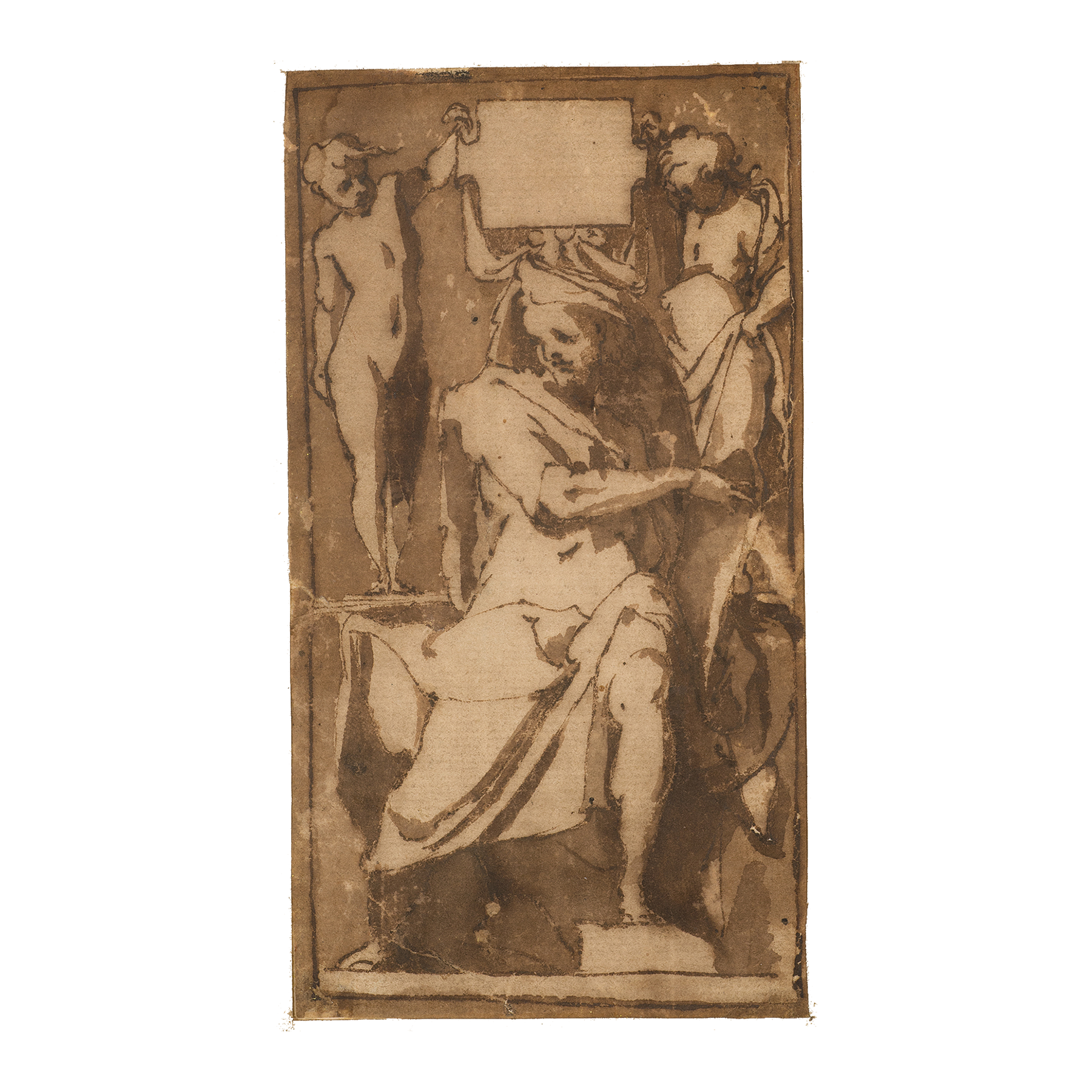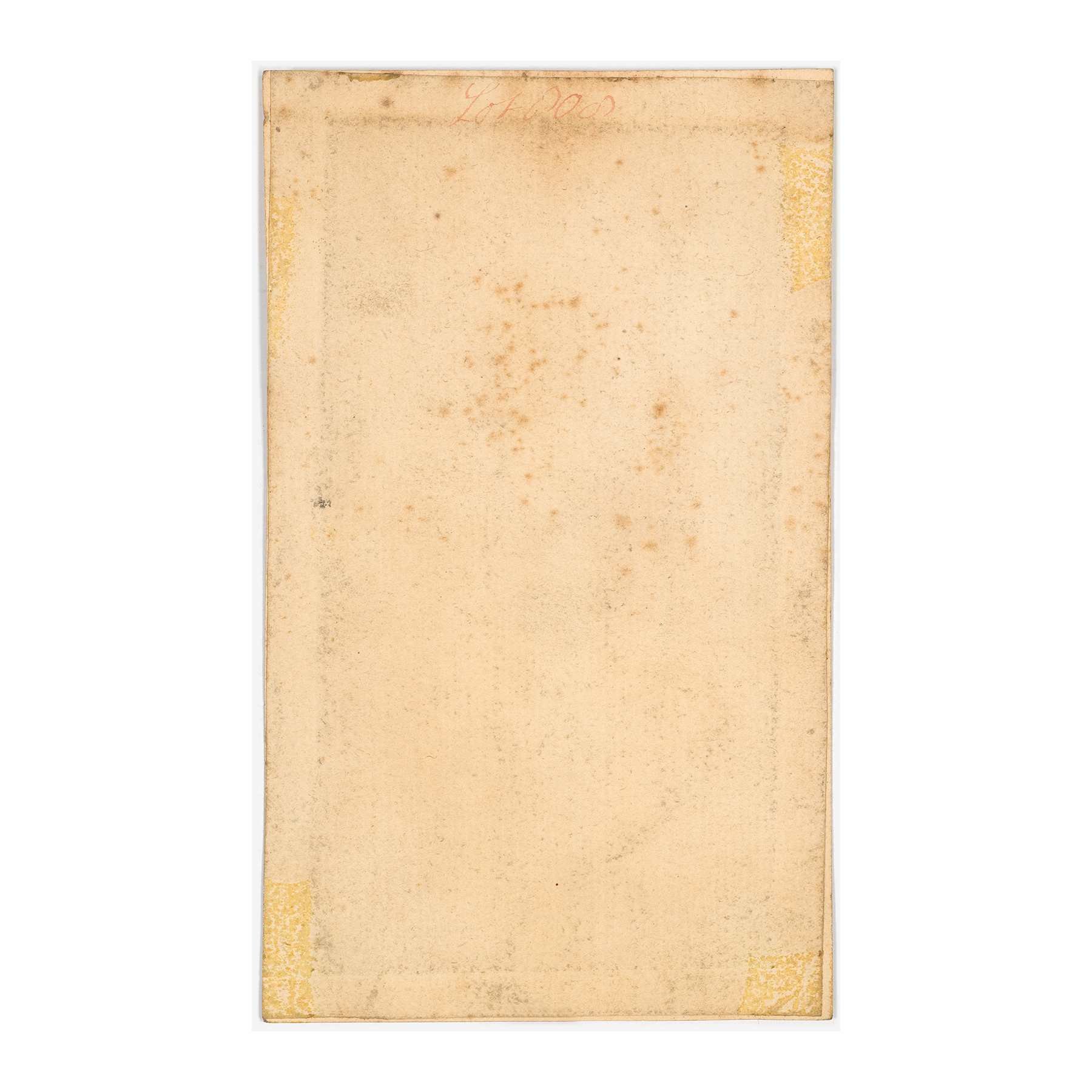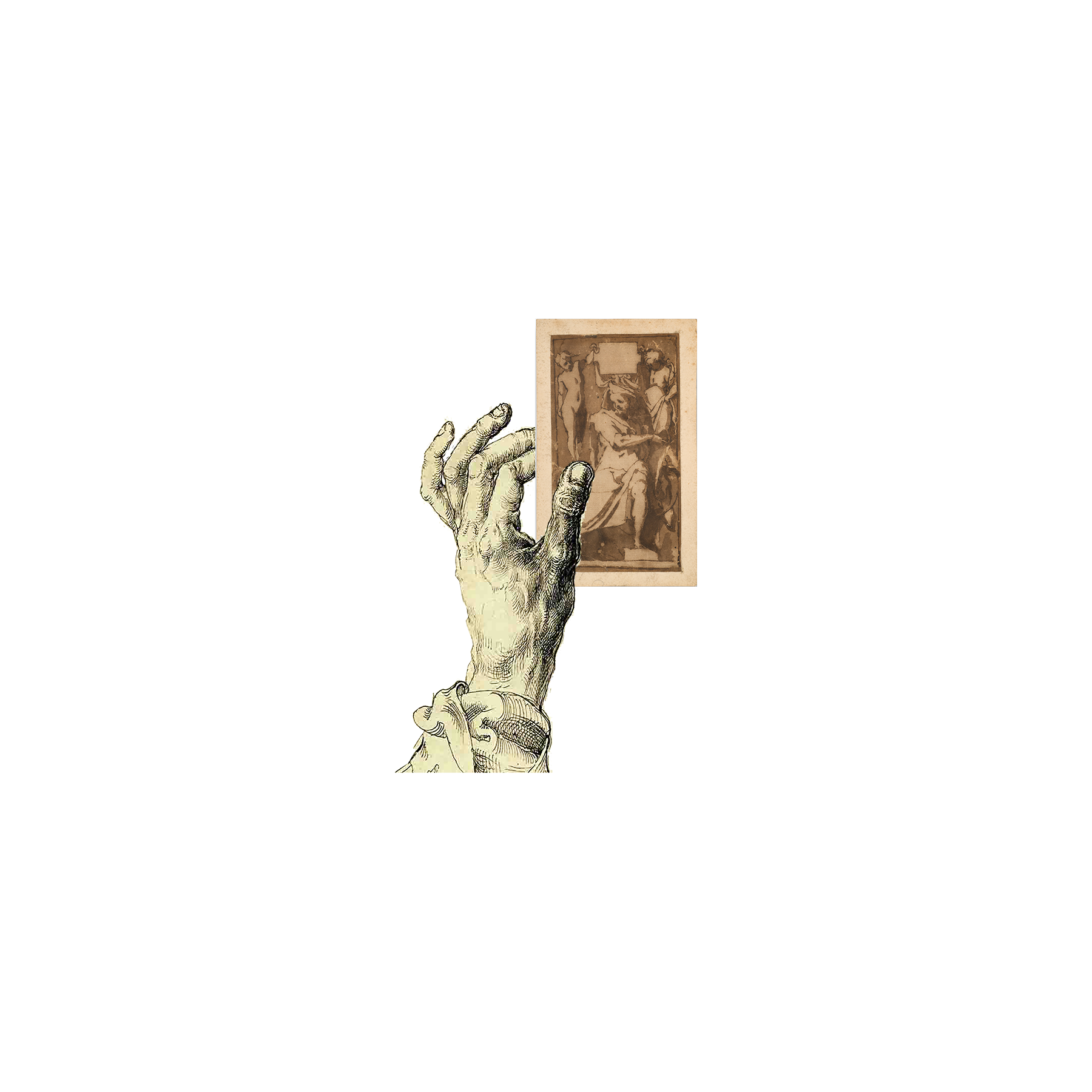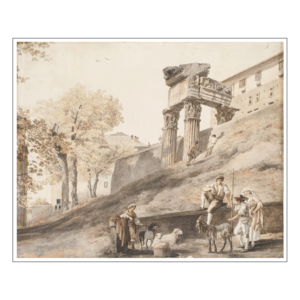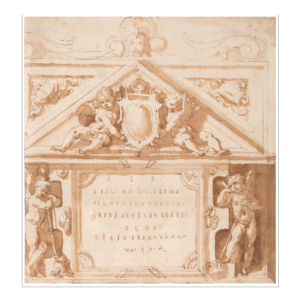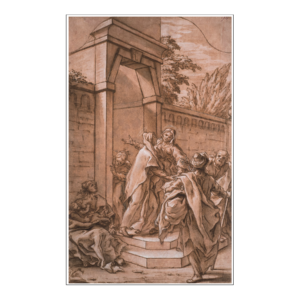Andrea Boscoli
Florence, c.1560 – Rome 1608
The prophet Isaiah, after Raphael
Pen and brown ink with brown wash.
Dessin 172 x 68 mm, feuille 144 x 85 mm – Drawing 6 ¾ x 2 11/16 in. – Paper 5 11/16 x 3 5/16 in.
The Florentine Mannerist painter, Andrea Boscoli – a pupil of Santi di Tito – made numerous copies, drawings made from antiquity and Italian and northern masters of the 14th to 16th centuries. “Having gone to Rome, he made unusual studies in pen and watercolour. He drew maps of many beautiful churches, in particular ones for Saint Peter,” testifies Filippo Baldinucci in his Notizie de professori del disegno da Cimabue in qua[1]. In her catalogue of the artist’s works, Nadia Bastogi[2] lists 152 copies of all types, comprising more than a quarter of his remaining graphic works, which show the eclecticism of the artist’s references and also his ability to appropriate a model before absorbing it into his own style. This is undoubtedly what Baldinucci means when he states that, “There are no ancient statues or modern paintings presenting beautiful footwear, crests, shields and other similar accessories for figures that he has not drawn – to such a standard that he exerts his hand to express his own thoughts in drawing.”[3] In reality these drawings are only ‘copies’ in the sense of repeating an earlier motif. They are more correctly described as reinterpretations.
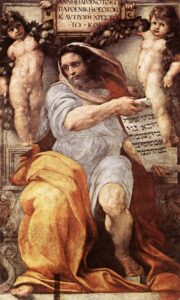
The prophet Isaiah painted in 1512 by Raphael for the church of Sant’Agostino in Campo Marzio, Rome (Fig. 1) seems to have been of particular interest to Andrea Boscoli since he drew another version that belongs to the Musée des Beaux-arts in Orleans (Fig. 2). Boscoli could have studied Raphael during his first trip to Rome in the early 1580s, but he may also have been inspired by the engraving Hendrik Goltzius made after Raphael (Fig. 3) in 1592 (Nadia Bastogi has demonstrated the importance of references to northern engravers in Boscoli’s work). This hypothesis makes it impossible to date the two drawings of the prophet Isaiah precisely, but it seems logical to place them in the years of his youth.
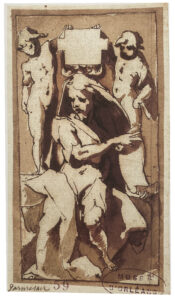
Whatever Boscoli renders on paper is usually very different from the painted or engraved original. At the end of the anguished sixteenth century, under Boscoli’s touch, Raphael’s prophet of superhuman beauty and majestic presence becomes a thin, almost gangly being of strange expression. The flower garland disappears; putti with exaggeratedly elongated bodies carry aloft a simple empty cartouche. Comparing the two Boscoli reinterpretations with the original work confirms the artist’s ability to transform major references through his own aesthetic and his characteristic graphic style. “It is this otherness in the ‘sameness’ that forges the originality of Boscoli’s art,” writes Eric Pagliano when talking specifically about the copy held in Orleans.[4]
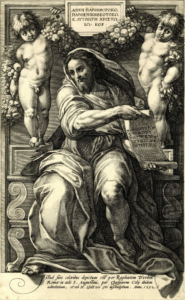
There are many differences between the two versions: the artist searches for the best way to arrange the drapes, to position the prophet’s legs. He questions whether to cover the nudity of the putto on the right. If, as for most artists, copying is a means of building a library of images, Boscoli appears to work in a different way. He is already projecting himself into future realisations – even merely hypothetical ones – and imprinting his own intentions and inventions onto the motif. In 1589, Boscoli created a prophet that has since disappeared, for the decorations commissioned for the drum of the Florence dome on the occasion of the wedding of Christine of Lorraine and Ferdinando I de’ Medici. In 1594, he painted frescoes of prophets for the lunettes in the Church of the Monks of St. Matthew in Pisa, works that are now badly damaged. Establishing a kinship between our drawing and these works would be precarious, to say the least, but one can undoubtedly imagine that when painting, Boscoli had the prophet after whom he had made two copies – or rather two times interpreted – in mind, making it carefully considered. What Baldinucci had already understood was Boscoli’s quintessential Mannerism, writing that: “He drew so well that his drawings, without lacking an extraordinary frankness and precision of touch, did not look natural, but rather copied with ease from other drawings […]; this, however, causes them to be considered somewhat mannered at times.”[5]
Andrea Boscoli was a great traveller, always richly dressed with a sketchbook tucked into his belt in order to put everything he saw down onto paper, perceived through a filter of elegance and culture that seems to have been a principle of his life. A man who developed “a good line of poetry, had a sure touch on the harpsichord and good music”[6] appears, in the words of his biographer, almost like a dandy: “He always used […] to dress richly, in noble drapes; pursuing his bizarre train of thought and picturesque genius more than typical dress. He wore gold bracelets and many large rings with beautiful carnelian intaglio on his fingers, and behaved nobly in every other way”.[7] The strength of Boscoli’s true personality emerges from Baldinucci’s description and explains unquestionably the homogeneity of his graphic and pictorial style – an endearing style, recognisable for its very diversity that delights lovers of drawings and attributions alike.
[1] Baldinucci, Filippo: Notizie de’professori del disegno da Cimabue in qua, (1681 – 1728), ed. Milan, 1811, volume VIII, p. 374 : “Portatosi a Roma, fece non ordinari studi a penna e acquerelli. Levò la pianta di molte bellissime chiese, ed in particolare di quella di san Pietro”
[2] Bastogi, Nadia: Andrea Boscoli, Florence, 2008, Edifir Edizioni Firenze, p. 296-312.
[3] Baldinucci, op. cit., p. 374 : « nè vedde antica statua o moderna pittura, ove fossero bei calzari, cimieri, targhe, e simili altri addobbi di figure che egli non disegnasse, onde fecesi tanto pratica la mano in esprimere in disegno i proprio pensieri … »
[4] Dessins italiens du musée des beaux-arts d’Orléans, de Venise à Palerme, Paris, Orléans, 2003, n° 29, p. 58-59.
[5] Baldinucci, op. cit., p. 379: Disegnò si bene che i suoi disegni senza mancare di una franchezza e bravura di tocco straodinario non paion fatti al naturale ma copiati a tutto suo agio da altri disegni. […] questo però cagiona in loro il difetto di potersi dire alquanto ammanieratti.
[6] ibid. p. 380: “una buona vena di poesia, un sonar sicuro del cembalo e buona musica”
[7] ibid., p. 380: “Uso sempre, comme dicemmo, di vestirse riccamente, e di drapi nobili; e seguitando più la bizzaria de’ suoi pensieri e il genio pittoresco che il costumo universale, portava maniglie d’oro, e molti e grandi anella in dito con bellissimi intaglie di corniole, ed in ogni altra cosa trattavasi nobilmente.”

